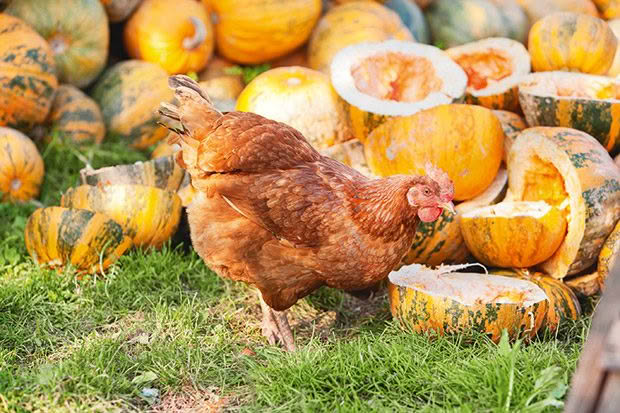4 natural poultry ‘remedies’ that aren’t proven by science

A poultry specialist debunks myths about natural products for chicken health.
Words: Nadene Hall and Sue Clarke
In the last decade, scientists have shown that many natural products can positively affect poultry health and productivity. Some of the latest research findings include:
• green tea, nettle, pennyroyal, yarrow, and alfalfa seeds, powder, and extracts can improve poultry immunity, reduce the growth of pathogenic microbes, and improve the viable counts of lactic acid bacteria;
• lavender, alfalfa, and nettle powder improve egg yolk colour;
• ginger reduces fat content in meat;
• flax seeds increase alpha-linolenic acids and omega-3 fatty acid content in chicken tissue, and improve quail egg hatchability;
• plant metabolites, particularly carvacrol (found in oregano and thyme) and thymol (found in thyme) are natural growth promoters and improve immunity.
But for all the positive natural news, some myths persist, says Dr Maurice Pitesky (Dr Pitesky is a US vet and researcher who specialises in poultry disease and health).
1. Raw milk
There’s a lot of information online about raw milk acting as a natural probiotic to treat gastrointestinal issues in poultry. It’s completely wrong, says Dr Pitesky.
“Raw milk, and any dairy products, contain lactose, and birds can’t digest lactose. Also, it won’t work (as a probiotic) because milk and other dairy products don’t have the millions or billions of beneficial bacteria that you find in probiotics.”
He says it’s also a perfect example of how a ‘natural remedy’ can actually cause harm. “If birds have one problem, they’re tough, they won’t show any signs of disease, for example, if they have an E coli infection. But give them a second problem, like feeding a diet they shouldn’t have, and then the first problem can become a big problem. Usually, if a bird has 2-3 problems, that’s when you start seeing clinical signs of disease.”
There are manufactured probiotic products for poultry. They’re especially useful for chicks and young birds, as they help seed the gut with ‘good’ bacteria, improving their digestive system over their lifetime compared to birds that don’t receive them. A probiotic might be one option of many to consider when a bird is sick, but there’s no evidence that they treat gastrointestinal infections.
2. Pumpkin seeds
Another popular myth is that pumpkin seeds act as a dewormer. There’s no literature on it in chickens, says Dr Pitesky, although there have been studies in other animals.
“I was surprised to find there have been studies in other animals, including cats, where they used pumpkin seeds and other seeds from squash in order to reduce parasites like tapeworms.” However, you can’t make a leap and assume the same thing will work in poultry.
“One, you’re switching species, and you’re also assuming all parasites are created equal, which they’re not. There are all these variables, in the animals, the treatment, what seeds were grown, what species of squash were they, how do you prepare them? If there’s an active ingredient in there and you inactivate that ingredient, you might be feeding pumpkin seeds, but it won’t work.”
Different varieties of pumpkin have seeds that contain varying amounts of amino acids, which may have anthelmintic properties. One of them, cucurbitacin, tested in vitro (in a lab) was effective at killing round and tapeworms. Levels of amino acids in seeds vary depending on the variety of pumpkin and how it’s grown. Scientists don’t yet know what specific amino acid (or a mix of them) is effective against parasites, or what level would be needed to successfully treat an animal.
3. Dog & cat food as a diet for moulting birds
During a moult, birds shut down their reproductive tract, lose their feathers, then grow them back. Feathers are about 85% protein. That’s led some people to think feeding them a protein-rich diet such as cat or dog food will help.
“But cat food especially is really high in salt, and that’s not conducive to a good poultry diet,” says Dr Pitesky. “There are guidelines for different animal feeds that look at the requirements for protein, salt, calcium, phosphorus, and those are not identical.”
4. Sand as bedding
Some poultry owners use sand as bedding and treat it like cat litter, scooping up manure and removing it. However, sand isn’t suitable for poultry.
“Sand is abrasive and can scratch the bottom of their feet and cause bumblefoot, an infection in the feet,” says Dr Pitesky. “(Chickens get bumblefoot) because of husbandry practices that aren’t ideal. They get small scratches, then pick up bacteria in the environment – E coli, staphylococcus – which causes a bumblefoot infection, and it’s really hard to treat. There are antibiotics, but it’s really hard to get them to the foot in the right concentration.”
Love this story? Subscribe now!
 This article first appeared in NZ Lifestyle Block Magazine.
This article first appeared in NZ Lifestyle Block Magazine.
